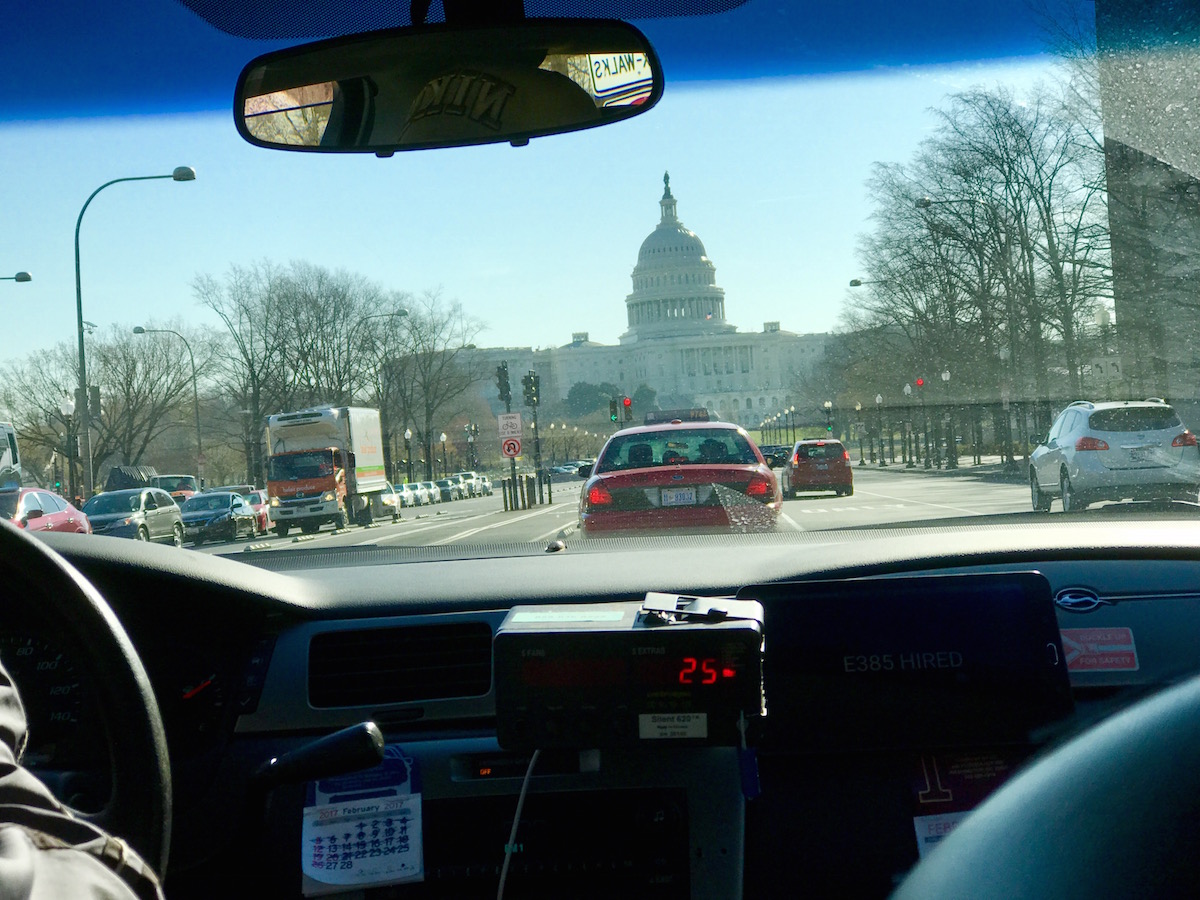Additional research/writing by Katie Rafter and Ben Jenkins, updated Feb. 26th 2018
Our company mission is to find creative ways to help our clients make the world better. Our clients include museums and other organizations and companies that support or serve the arts. Although our primary work with these clients is brand- and strategy-related, we inevitably get involved professionally and personally in their missions. This is what brings me back to Washington DC this week with several hundred other museum advocates from all 50 states: to meet with our congressional delegations and remind them how important the arts are to America.
 Over the years of working with museums, I have listened to hundreds of stories about the impact of these institutions on society. One archetypal version of this story is also my own. Why am I a museum lover? Why are museums so important? Setting aside their tremendous economic impact (which includes a $49.9 billion total contribution to GDP in 2016) momentarily, I have a museum story.
Over the years of working with museums, I have listened to hundreds of stories about the impact of these institutions on society. One archetypal version of this story is also my own. Why am I a museum lover? Why are museums so important? Setting aside their tremendous economic impact (which includes a $49.9 billion total contribution to GDP in 2016) momentarily, I have a museum story.
The vast majority of the work museums do is privately funded, but this work is catalyzed by a kernel of funding from the government.
When I was 14 or 15, my mother drove me to Washington DC and walked me through the National Gallery of Art. In that visit, I vividly remember an encounter with a particular artwork, an installation with figures of men in the frame of a real car. In front of the car was a video projection flashing nondescript images. I remember standing in front of this work transfixed and completely unable to understand what I was looking at. The dissonance between my emotional response to the artwork and my intellectual incapacity to make sense of it opened up a realization in me that there were worlds I did not understand—but that I wanted to. What was absolutely mundane on the surface presented to me a window into the spiritual. Looking back, I see this as a liminal moment that sparked my intellectual curiosity, unlocking a process that has served as one of the driving forces of my life. This spark was lit in a museum, in an exhibition offered for free to the public in the late 1970s. In that moment, I was silently handed a quest: Do more. Be more. I replaced whatever plans I had with bigger ones. The artwork in this museum made me far more ambitious.
There are 35,000 museums in the United States. They support over 726,000 jobs and pour $49.9 billion a year into the economy (as noted above but worth repeating), generating more than $12 billion in tax revenue. They have approximately 850 million visits each year, more than all major league sporting events and theme parks combined. And it turns out that 95 percent of voters approve of legislative action to support museums, including 93 percent of conservative voters.
The vast majority of the work museums do is privately funded, but this great work is catalyzed by a kernel of funding from the government, and that kernel is particularly important in providing access to the arts for those without the means to pay for it.
What does it cost to unlock the American dream?
The arts are one key to unlock the American dream. Museums did this for me. What does it cost the government to do this for the next generation of Americans?
 The National Endowment for the Arts (NEA) and the National Endowment for the Humanities (NEH) each got $147.9 million in 2016. By comparison, the overall federal budget was $4.15 trillion. Ben from my office was reading an article and realized that this ratio is almost exactly the same ratio as that of the cost of the Chipotle burrito he was eating for lunch and his entire annual salary. He asked me to leave open the question of whether he pays extra for guacamole so that your salary estimate can’t be too exact.
The National Endowment for the Arts (NEA) and the National Endowment for the Humanities (NEH) each got $147.9 million in 2016. By comparison, the overall federal budget was $4.15 trillion. Ben from my office was reading an article and realized that this ratio is almost exactly the same ratio as that of the cost of the Chipotle burrito he was eating for lunch and his entire annual salary. He asked me to leave open the question of whether he pays extra for guacamole so that your salary estimate can’t be too exact.
The point is that funding for the NEA and NEH is what one congressman described as “budget dust.” There is no vote on it specifically—it’s too small. But what is its role in shaping and promoting the preservation and development of American culture? What is its role in ensuring continued American greatness?
This “budget dust” is magic dust.
I once breathed a bit of it and it changed my life. My story is repeated in my own children and in story after story I have heard throughout my years of professional interviews and conversations on the subject. With 850 million visits to American museums a year, more people visit museums and are thus given the opportunity to breath in a bit of this budget dust than all the people who attend all professional sporting events and theme parks combined.
Back on the chopping block?
Debates about funding to the NEH and especially the NEA are not new. Social conservatives have been pushing for these cuts since the Reagan administration in 1981, unhappy with the fact that art they deemed inappropriate or offensive was being funded by the government. In this process, Piss Christ was unfairly seared into the brand image of the NEA. A report published by Heritage in 1997 outlined ten reasons why funding for the NEA should be eliminated, calling it wasteful and beyond reform, and criticizing the endowment for pushing a left-wing agenda with its grants. Do these concerns still stand within President Trump’s base, and could this be a way of appeasing, or appealing to, his more conservative supporters?
Is the NEA “welfare for cultural elitists”?
Conservative arguments for cutting the NEA and the NEH, like the Heritage Foundation report noted above, often suggest that federal arts funding only really goes toward major cultural institutions that benefit the wealthy. It argues that such institutions would barely be impacted by the elimination of federal funds as they could continue operating solely using private donations. It is true that defunding the NEA would have little impact on major institutions like the Met or the Kennedy Center due to their large private sources of support. But it is also true that many small town and community institutions rely heavily on NEA grants and the secondary benefits they carry.
Many small town and community institutions rely heavily on NEA grants and the secondary benefits they carry.
The NEA supports a small radio station outside of Tulsa, Oklahoma. It supports a filmmaking center in the town of Whitesburg, Kentucky, whose population is 2,100. It supports a music enrichment program for economically disadvantaged middle schoolers in northern Ohio. The NEA, either directly or through state partnerships, awards grants to all 435 congressional districts each year. 65% of grant money goes to small- or medium-sized institutions (designated as having annual budgets below $1.75 million). On this front, the Heritage Foundation’s argument is misguided. We face a corrosive and growing social divide in this country. Wealth inequality and gaps in educational attainment are increasing. Far from being “welfare for cultural elitists,” the NEA and NEH help provide valuable access to the arts and humanities for individuals and entire communities who would otherwise be unable to afford them. Cutting arts funding will only accelerate the polarization of our society.
Cutting arts funding will only accelerate the polarization of our society.
The arts and humanities are crucial parts of what make us human. Studying them makes us think more critically and creatively. It makes us more innovative. It makes us more empathetic. These fields inspire us, bring us together, and contribute to the health of our democracy. Yet we spend an astonishingly small amount on them relative to most developed countries. We can and should do more to support them and enrich our society in the process. But instead we are talking about doing less. Why? Why would the administration propose such inconsequential cuts? They are too small to save any meaningful amount of money.
Rather than suggesting anything sinister, perhaps those who would kill this simply don’t see the magic in the dust. It’s such a small thing in the scheme of all the budgetary chaos that will ensue from the whirlwind of disruption that the newly proposed budgetary mandates would require. It’s our job to show them the magic. And this can be done with our national legislators since these decisions are not the president’s to make.
It’s our job to show Congress the magic in the dust.
The members of Congress, whose job it is to represent our interests, are responsible for deciding the fate of these appropriations. They are in a difficult position, to be sure, but they do listen. They do pay attention to visits, letters, social media comments, and emails from constituents, especially if these messages are heartfelt and personal. Our message should be delivered to them, and it shouldn’t be a partisan one. Funding to the NEA and NEH was raised every year during the presidency of George W. Bush. Members of Congress must be reminded of something they may already know in their heart: treating this budget dust as inconsequential will have an impact on our economy, our culture, our children, and our democracy.
Action with Congress
Please show your congressperson the magic in the budget dust that is the NEA and NEH. Please remind them that empathy, the thirst for knowledge, a sense of wonder, and the spark of curiosity matter greatly. Please remind them of exactly how your local institutions transfuse these things into the lifeblood of our nation, how they are like a phalanx of culture drawing on this budget dust, using it sparingly and well. Tell them how it catalyzes the good that each institution brings into the communities they serve in all 50 states. Help them to see why they, too, should cherish and preserve this budget dust because it is far more important than it seems and because its absence will be very dearly felt.
Specific requests:
- Urge your representatives to support annual funding of at least $155 million each for the National Endowment for the Arts and the National Endowment for the Humanities.
- Urge your representatives to support full funding for the Office of Museum Services (OMS) at the Institute of Museum and Library Services (IMLS), which is authorized at $38.6 million.
- Urge your representatives to cosponsor S. 2271, the Museum and Library Services Act of 2017, bipartisan legislation that would reauthorize the Institute of Museum and Library Services.
- Urge your representatives to enact a universal charitable deduction available to all American taxpayers, regardless of whether they itemize their deductions.
Tools and more details on AAM’s Advocacy Day Page.
Image credit: DC photo by the author; “Burrito @ Chipotle @ Saint-Germain-des-Près @ Paris” by Guilhem Vellut is licensed under CC BY 2.0 / Photoshopped from the original


Truly great blog post!